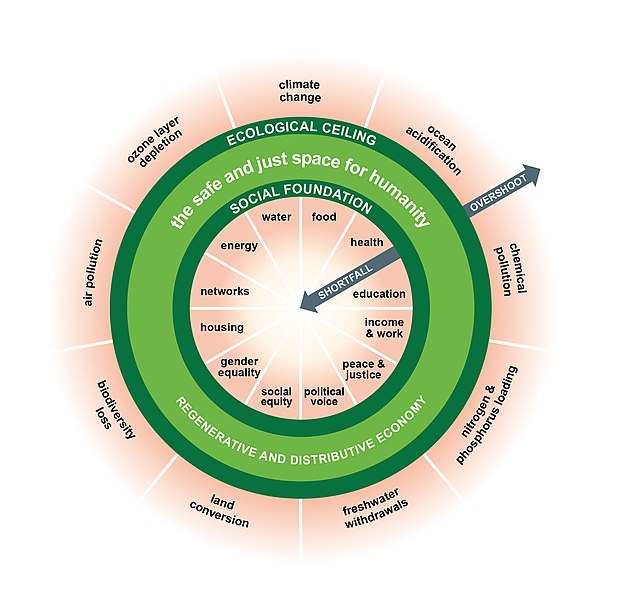Sustainability is like a doughnut
March 2, 2021
Although a newspaper column cannot dish up a delicious dose of a doughnut for each reader, this article is going to attempt to grow your hunger to dive deeper into what it means to be a sustainable society. Are you willing to sit down for this editorial meal?
Good. Me too.
The model we will use to set our table is called doughnut economics. It was designed by economist Kate Raworth.
The basic design of the system is one circle inside of another, or if we want to keep with the theme of dinner, a small dinner plate on top of a larger dinner plate.
The inner circle represents the basics of life that we all need to survive — food, water, shelter etc. If we go inside the inner circle, we enter a society where the people do not have access to basic human needs. We see homelessness, hunger and health issues.
The twelve categories that must be considered for human needs include: water, food, health, education, income and work, peace and justice, political voice, social equity, gender equality, housing, networks and energy.
The outer circle represents the environmental limits of our planet. Leaving the inside of that circle will damage the environment leading to air pollution, climate crisis, loss of biodiversity and so much more. The nine categories that must be watched so we do not go beyond the limits are climate change, ocean acidification, chemical pollution, nitrogen and phosphorus loading, freshwater withdrawals, land conversion, biodiversity loss, air pollution and ozone layer depletion.
In the model, Raworth argues that sustainable societies lie in the space between the two circles. She calls it the “safe and just space for humanity.”
Picture it as a real doughnut.
All the glorious goodness is found in the beautiful ring of dough decorated with frosting and sprinkles. Anything passed the outer edge is not a doughnut, or in the model’s case, is not good for the environment. Anything in the center of the doughnut is also not a doughnut, or in the model’s case, does not meet societal needs.
This doughnut model provides a new visualization of the traditional three pillars of sustainability. It shows the balancing act between meeting human needs and protecting the environment. Just like a recipe, too much or too little of each ingredient – or in this case meeting society’s needs and environmental preservation – can change the outcome of a meal.
We know that sustainability is about maintaining human life, but to maintain a quality human life, the surrounding environment must also be in functioning order.
Think about this balance for a moment.
Humans rely on Mother Nature. Rivers, glaciers and aquifers provide drinking water. The soil provides nutrients for growing food. The atmospheric layers protect us from the sun’s harmful rays.
However, if we meet society’s needs but disregard environmental limits, we find ourselves facing another set of crises – water shortages, unproductive farmland, holes in our ozone layer, devastating storms and unbreathable air. These crises also inhibit our ability to provide for society’s needs just like if we did not use these resources at all.
Raworth’s doughnut economics, thus, provides a recipe book for a sustainable society.
We have all the ingredients we need, but we must find the right balance.
























